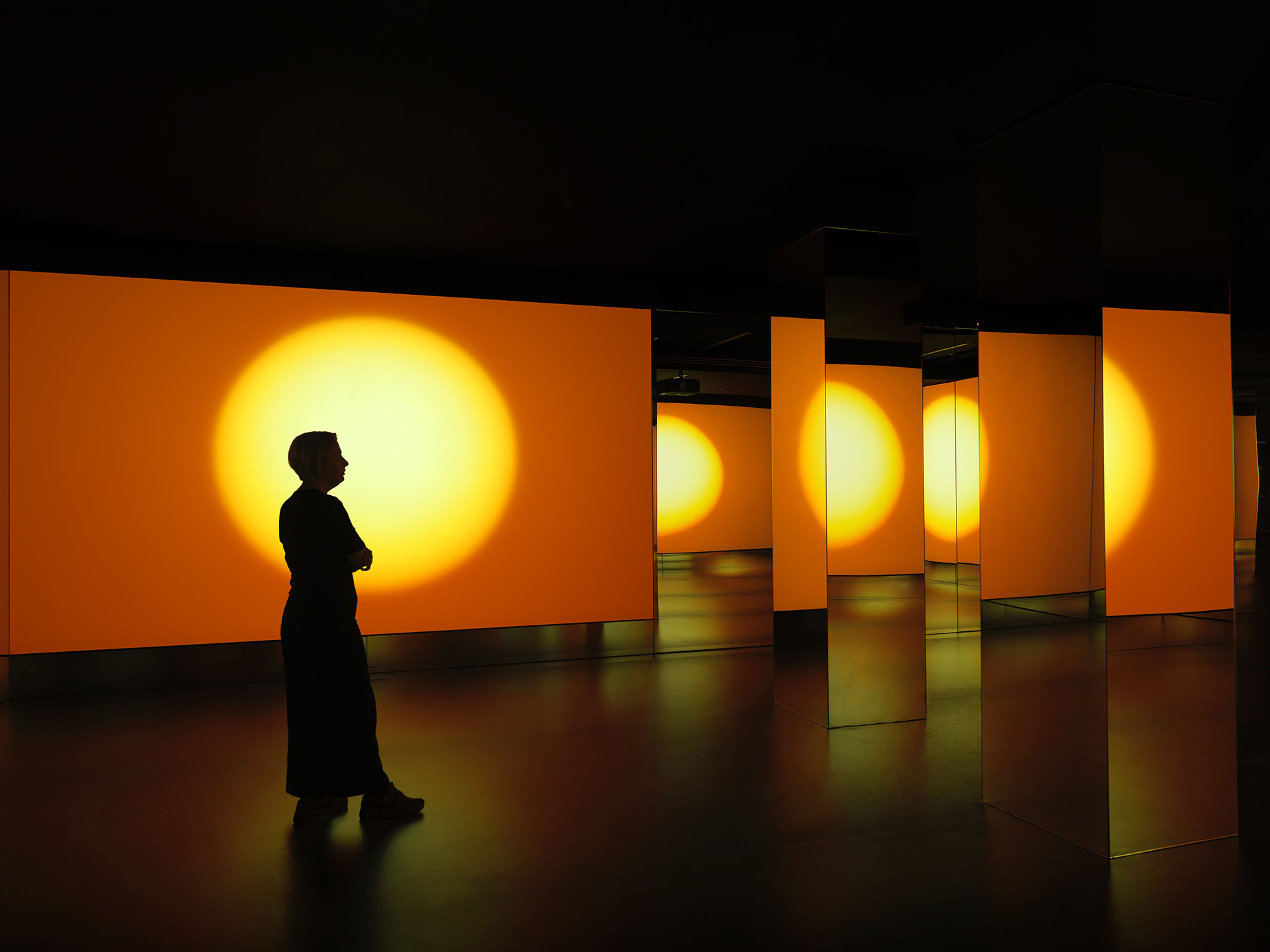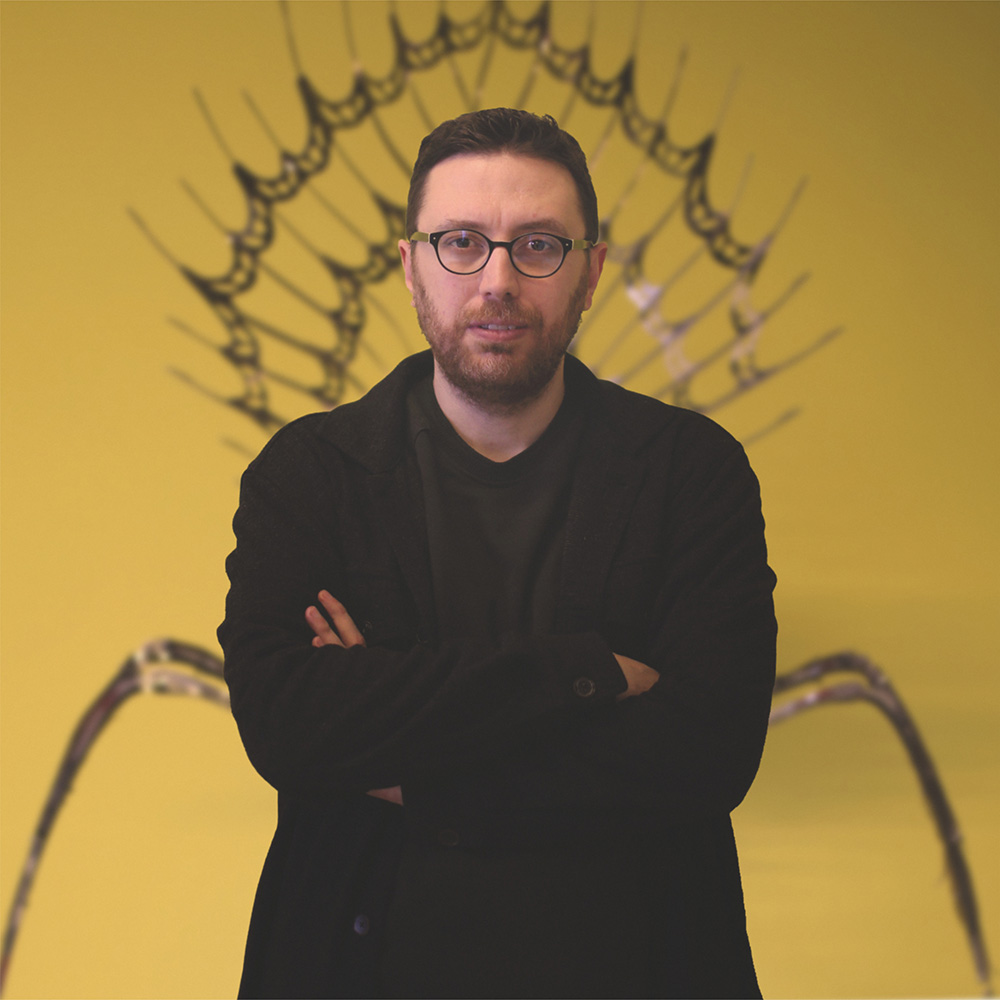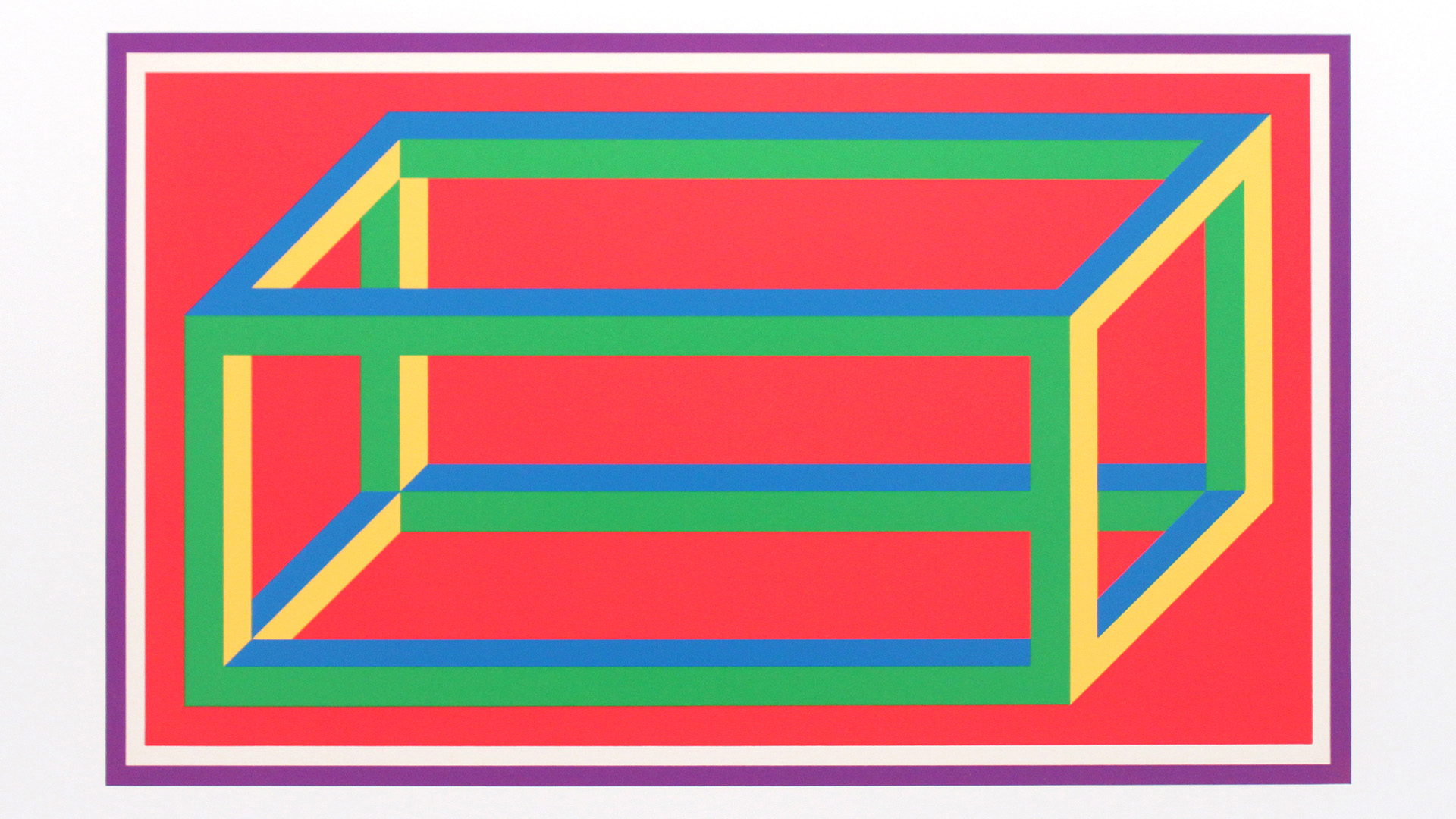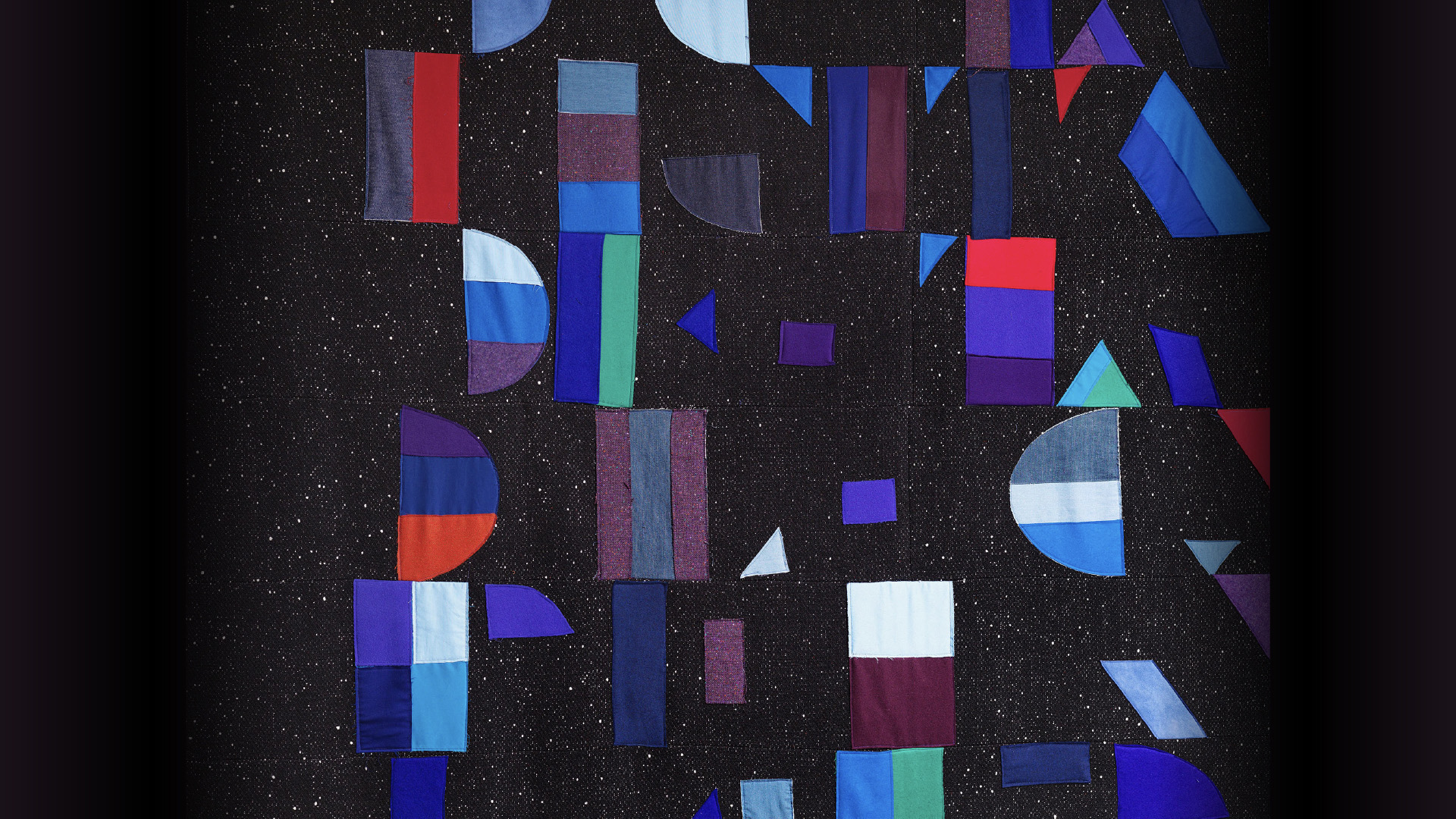Blog
The Rhythmanalysis of Naked City
8 August 2025 Fri
Doug Aitken’s Naked City (2024) exhibition is an experience that questions the rhythms of the modern city and the individual’s relationship with space. Through the concepts of “rhythmanalysis” and “non-place,” Oktay Orhun offers an in-depth look at the artist’s cinematographic approach.
Doug Aitken's first solo exhibition in Türkiye, Naked City (2024) continues to welcome visitors at Borusan Contemporary. Curated by Jérôme Sans, a multifaceted art director, the exhibition brings together works that exemplify Aitken’s interdisciplinary artistic practice. Born in California in 1968, Aitken is known for his innovative approach to contemporary art, and video art in particular.
Beyond being a prolific artist, Aitken is equally well-versed in verbally expressing his stand points. That said, apart from encountering his artworks, one of the most effective ways to engage with his work might be through his interviews. Indeed, a particularly insightful interview on the show Naked City was published in the November-December 2024 issue of Art Unlimited. Conducted by İbrahim Cansızoğlu, this conversation features several standout remarks that can be examined both within the context of the Naked City exhibition and as part of a more comprehensive understanding of Doug Aitken’s art. To have an understanding of these parallels, we should take Aitken’s other texts, works, and interviews into consideration. For instance, Kumru Eren’s essay for the Naked City catalogue that accompanies the exhibition is one of these texts. Eren’s essay focuses on the connection points of the city and the individual—an aspect we will discuss shortly—through a melancholic poem by Konstantinos Kavafis. The connection between these verses and Aitken’s artworks is framed through the concept of “deterritorialization”, a key notion in the writings of Gilles Deleuze and Félix Guattari. To avoid redundancy—while fully acknowledging the conceptual link Eren so aptly establishes—we will explore two alternative perspectives here.
The first concept is Marc Augé's of “non-places”, and the second one known as “rhythmanalysis” is one of Henri Lefebvre's conceptualizations on space, time, and everyday life. The primary reason for selecting these two frameworks is their particular prominence within architectural theory. Ultimately, despite the ever-changing environments in which he works, Aitken remains, above all, an artist who engages with space—both as a subject and as a medium. However, it is crucial to recognize that his relationship with space is always fluid, and rhythmanalysis can further aid us in understanding this aspect of his work. Another defining characteristic of Doug Aitken, closely tied to this sense of fluidity, is his cinematographic perspective and narrative choices, which extend beyond the cyclical nature of video art. In this regard, it is essential to examine the section of Heinz Peter Schwerfel's book, Cinema and Art: A Love Story that specifically focuses on Aitken’s videos, particularly in the context of the relationship between cinema and contemporary art. Similarly, we should also consider Aitken’s book Broken Screen, which features interviews with twenty-six creative figures from various fields, including Werner Herzog and Alejandro Jodorowsky. The questions Aitken asks his interviewees undoubtedly offer insights into his artistic concerns and priorities. Finally, it would also be relevant to refer to the publication dedicated to sleepwalkers debut at MoMA in 2007 which aligns with these discussions. Nevertheless, as every text is shaped by the expectations of its author, we must clarify from the outset that this brief essay will ultimately explore what Naked City might represent.

Doug Aitken, sleepwalkers, 2007.
Installation view; Courtesy of the artist; 303 Gallery, New York; Galerie Eva Presenhuber, Zurich; Victoria Miro, London;Regen Projects, Los Angeles;
Photo credit: Hadiye Cangökçe.
In the Aitken-Cansızoğlu interview, the artist responds to a question with another question: “What happens when unease becomes a permanent state? I think this is a state we are increasingly inhabiting.” 1 This rhetorical response was given on a question regarding the artwork windows (2007), emphasizing the sense of placelessness conveyed through it. Indeed, the first way to attune oneself to Aitken’s art may well be through this shared, persistent sense of unease. 2 In the foreword to Doug Aitken: 100YRS, Francesco Bonami notes that, Atkin, despite “growing up in the pastoral climate and tranquil sociability of a small seaside resort near Los Angeles, on the Pacific coast, … he belongs to the generation that was able to cash in on the freedoms earned by the counterculture,” and each of the artist's works is “a tale narrated from the depth of the human soul, trapped by the unavoidable loneliness hidden within each of us.” 3 This observation culminates in a striking insight: “Aitken’s images tell the story of the contemporary subject, wandering like an isolated nomad in the universe of contemporary Western society.” 4 But where does this story unfold? In the case of windows, space becomes blurred—it dissolves into a non-place. The term non-place, coined by the French anthropologist Marc Augé, describes transient spaces in the modern world that fail to produce (or are unable to produce) identity, history, or meaning—spaces where deep human connections cannot be formed. Airports, shopping malls, highways, and hotel lobbies are classic examples of non-places. These are impersonal, temporary spaces that individuals pass through for purely functional reasons. According to Augé, the proliferation of such spaces, driven by globalization and modernity, has heightened the sense of displacement and non-belonging among individuals. The concept of non-place plays a crucial role in interrogating how space acquires meaning in a sociological and anthropological context. However, in its initial formulation, the concept seems to have overlooked the potential for self-reflection within these spaces. This is precisely where Doug Aitken identifies a possibility: the opportunity for modern individuals, despite their shared state of perpetual unease, to turn inward and engage with themselves. An early manifestation of this underlying condition, which could be considered foundational for nearly all of Aitken’s works, is don’t think twice II (2006). Wisely acquired by Borusan Contemporary Art Collection many years ago, this work can be interpreted as a neon sculpture composed of two overlapping concentric circles that unfold through a dynamic sequence. More significantly, however, it embodies an aesthetic abstraction of this very notion—an abstract expression that seeks to capture the essence of the moment. This expression not only treats expectation and circumstance as a foundational element but also transforms form itself into a foundation. Conceptually linked to don’t think twice II, a similar interpretation is also applicable to Ascending Staircase (2024), the commissioned artwork of this year’s temporary exhibition, Naked City. At this point, let’s turn to Aitken’s own words: “I think reflection is the right word. I think in this exhibition, in a way, they’re really dancing with each other; they’re both kinetic artworks.” 5 Indeed, the kinetic structure of these works—along with the rhythm and harmony that movement acquires in Aitken’s broader practice—highlights a recurring preoccupation in his art: the interplay between movement and the present moment, whether through its amplification or deliberate suspension. This focus reflects another key aspect of his approach to contemporary art: “I think we can use contemporary art as a way to form a new language: a language that helps us move with real-time and the present.” 6 A similar perspective is echoed in Kerry Brougher’s essay "Out of Time” in 100YRS, where he writes: “Like many of the most innovative filmmakers of the twentieth century, Aitken is concerned with time not only as a subject but with how it relates to the medium itself. The subject becomes possible because of the nature of film—it is unfolding in time, so time becomes embedded in the moving image and inseparable from it.” 7 When discussing film, it is only natural to return to sleepwalkers. The well-known interpretations that first come to mind are that Aitken integrates time and space to offer viewers a temporal and spatial experience, that he deconstructs and reassembles time rather than adhering to traditional linear narratives, that his approach underscores the fluid and nonlinear nature of time, and that his exploration of waiting and continuity brings these themes to the forefront. Waiting, in particular, allows the viewer to experience the passage of time and its continuity. 8 He articulates this elsewhere: “Nonlinear structures allow you to explore time— rome) eli Mim) om pull it back, and reveal the inner workings of a single moment.” 9 All these interpretations—especially the suspension of movement and the relationship between waiting and continuity—are equally relevant to 3 Modern Figures (don’t forget to breathe) (2018). Here, it is crucial to recognize that the viewer’s experience is deliberately orchestrated. This, after all, is a subject that Aitken is deeply attuned to. His fascination with the topic is evident in his enthusiastic question to Pipilotti Rist: “Do you conceive of the exhibition space as a way of editing the viewer's experience, or do you concentrate primarily on the moving image?” 10
By now, it seems almost redundant to reiterate that the central focus of all the interpretations presented so far is the modern city and the human figure navigating within it. At this juncture, we can invoke Henri Lefebvre’s rhythmanalysis approach to help bring this discussion to its conclusion. Rhythmanalysis is an interdisciplinary framework that examines the rhythmic interactions of space, time, and everyday life. Aitken’s works similarly express—both visually and aurally—the intricate rhythms, recurring cycles, and the impact of these rhythms on the individual within modern life. According to Lefebvre, rhythm is a dialectical relationship between repetition and difference. It is not merely mechanical repetition; rather, it encompasses the variations and transformations embedded within it. In Aitken’s art, recurring images, sounds, and movements reflect the monotony and cyclical nature of modern life, yet the subtle shifts and variations within these repetitions reveal the richness of individual experience and perception. For instance, Aitken’s frequent use of recurring cityscapes, traffic flows, and human figures in his video installations forms a visual and temporal rhythm of everyday life. However, the fleeting changes—through light modulations, sound effects, and varying camera angles—allow the viewer to sense the uniqueness and ephemerality of each moment. Heinz Peter Schwerfel, in his book Cinema and Art: A Love Story , explores this concept through Aitken’s Electric Earth(1999), concluding that “episodes can overlap without falling into simultaneity.” 11 Schwerfel identifies this overlapping as a reinterpretation of “the effect of montage in cinema, which both connects and separates stories,” achieved through the nuanced structuring of video installations. This interplay is also evident in Flags and Debris (2021). Both the angled arrangement of the video channels and the way the content alternates between overlapping and diverging create a structure that echoes the layered episodic rhythm Schwerfel describes.
Let's continue exploring the connection with rhythmanalysis: Lefebvre’s rhythmanalysis emphasizes the interaction between cyclical (natural) and linear (social) rhythms. While cyclical rhythms correspond to nature’s recurring patterns (day, night, seasons), linear rhythms are associated with human-made processes (work, production, consumption). In Aitken’s art, these two types of rhythms frequently intertwine and influence one another. For instance, this interplay is evident once again in Flags and Debris, where natural cycles (such as sunrise) merge with human-made linear structures (highways, buildings). This convergence reflects both the tension and harmony between nature and culture. Rhythmanalysis introduces the concept of polyrhythmy, the coexistence of multiple rhythms. Aitken’s multimedia installations construct a polyrhythmic structure by integrating various sounds, images, and spatial elements, mirroring the complexity and multidimensional nature of everyday life. At the same time, there is a perceptible sense that this multiplicity flows toward a fleeting yet absolute harmony. sleepwalkers is perhaps the most renowned manifestation of this idea. It may be for this very reason that, in his interview with Cansızoğlu, Aitken enthusiastically describes the pandemic as “a moment of absolute universality.” 12
At this point, we could perhaps revisit sleepwalkers, but the explanation provided above is sufficient for now, and numerous interpretations are already available. Here, we will simply add to our commentary that the layering of the installation—achieved through the use of mirrors—as it is displayed for the first time in an enclosed space for this exhibition, stands as a noteworthy curatorial decision by Jérôme Sans. Thus, let us remain with Flags and Debris(2021) and bring this essay to a close: Ultimately, Lefebvre’s rhythmanalysis supports a critique of everyday life. 13 Likewise, Aitken’s works critically examine the rhythm of modern life, consumer culture, and the influence of media. The artist invites viewers to question the rhythm of their own daily existence. In his interview with Cansızoğlu, Aitken reinforces this perspective with the statement that he felt the banners were “flags that questioned, that spoke of a kind of resistance.” He continues: “I started thinking to myself, maybe these weren’t flags or banners at all; perhaps they were shelters, objects of self-preservation. These works could extend beyond the walls and transform into performances that could exist throughout the city.” 14
Let’s be clear: Like many skilled and acclaimed artists, Doug Aitken shifts the realm questioned by the performative—without outright denying the social aspect—toward the individual plane. This is a recurring theme in almost all his interviews and writings. Moreover, given the period and world in which he built his career, this approach is entirely understandable. At the same time, we must recognize that the world is changing—and that this change is becoming increasingly unsettling. The ones who will shape its direction are the people of the present, those who will, in one way or another, intertwine their own rhythms, dreams, and horizons—just as Doug Aitken has captured. Indeed, as in Kavafis’s poem, “This city will always pursue you,” 15 and finding another city is impossible. But tearing it down and embarking on its reconstruction remains a possibility. And perhaps there is nothing more beautiful than a demonstration—or even, who knows, a revolution—where flags and banners ripple in the wake of a moment of absolute universality. Until that day arrives, the Doug Aitken exhibition at Borusan Contemporary can be explored with a sense of curiosity and discovery.
1- Cansızoğlu, İbrahim (2024). Interview with Doug Aitken: "Olağan Zaman Kodunu Kırmak [Turkish]”, Art Unlimited (Sayı: 84), Kasım-Aralık 2024, p. 67.
2- The artist had previously projected this concern through the question: “'Do we stand in the calm center of this hurricane of modern life, or are we stepping into its turbulence? And do we have a choice?” According to him, this very issue is the starting point of the Broken Screen book project. For further information, see: Aitken, D. (2006). Broken Screen: 26 Conversations with Doug Aitken. Distributed Art Publishers (DAP), p. 6.
3- Bonami, Francesco (2013). “Foreword”, in Doug Aitken: 100YRS (ed. Karen Marta). Rizzoli International Publications, New York: USA, p. 12.
Given that Doug Aitken was born in 1968 and thus did not directly experience the global youth and labor movements of that era, as well as their eventual decline, I believe we can reconsider his 2011 work, 1968 (Broken), from this perspective. See the work here: Doug Aitken, 1968 (Broken), 2011; 303 Gallery, New York.
4- Ibid. (Translated by the author, Oktay Orhun)
5- Cansızoğlu, İbrahim (2024). Interview with Doug Aitken: “Olağan Zaman Kodunu Kırmak [Turkish]”, Art Unlimited (Sayı: 84), Kasım-Aralık 2024, p. 67.(Translated by the author, Oktay Orhun)
6- Ibid., p. 70.
7- Brougher, Kerry (2013). “Out of Time”, in Doug Aitken: 100YRS (ed. Karen Marta). Rizzoli International Publications, New York: USA, p. 94. (Translated by the author, Oktay Orhun)
8- In this context, the articles in the following two catalogs can be referred to in order: Aitken, D. (2001). Notes for New Religions. Hatje Cantz Verlag. and Aitken, D. (2007). sleepwalkers. The Museum of Modern Art in association with Creative Time.
9- Aitken, D. (2006). Broken Screen: 26 Conversations with Doug Aitken, Distributed Art Publishers (DAP), p. 12.
10- Ibid., p. 231. (Translated by the author, Oktay Orhun)
11- Schwerfel, H. P. (2013). Sinema ve Sanat: Bir Aşk Hikâyesi [Turkish]. RES Yayınları: İstanbul. p. 168.
12- Cansızoğlu, İbrahim (2024). Interview with Doug Aitken: “Olağan Zaman Kodunu Kırmak [Turkish]”, Art Unlimited (Sayı: 84),ovember–December 2024, p. 67.
13- For a detailed reading on the concept of rhythmanalysis, see: Lefebvre, H. (2013). Rhythmanalysis: Space, time and everyday life. Bloomsbury Publishing.
14- Cansızoğlu, İbrahim (2024). Interview with Doug Aitken: “Olağan Zaman Kodunu Kırmak [Turkish]”, Art Unlimited (Sayı: 84), November–December 2024, p. 67. p. 67.
15- “The City” from C. P. Cavafy: Collected Poems, trans. Edmund Keeley and Philip Sherrard, Princeton University Press, 1975.




